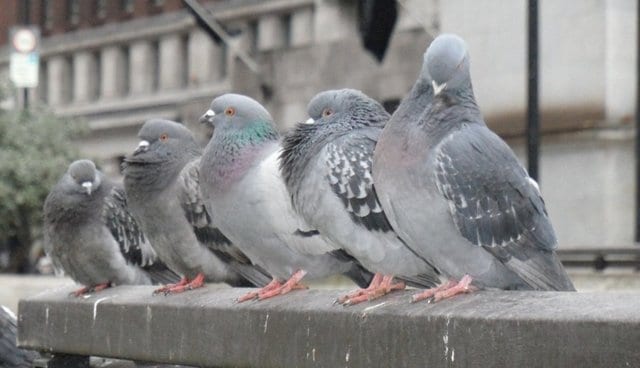
by Pigeon Patrol | Jan 19, 2023 | history of pigeons, MBCA, pet bird, Pigeon Control, Pigeon Droppings, Pigeon Patrol's Services, Pigeon Predators, Pigeon Spikes
Fancy a pigeon as a pet? They’re about to be legal again in the District of North Vancouver.
District council members voted 5-0 Monday night in favour of new bylaw governing domestic pigeons. It caps off a controversial two-year chapter for council, which originally voted to ban the pet birds in 2019.
Soon after, it came to light that Coun. Betty Forbes had lobbied Couns. Lisa Muri and Megan Curren behind the scenes to introduce the ban after years of complaints about her neighbour’s flock of pet pigeons.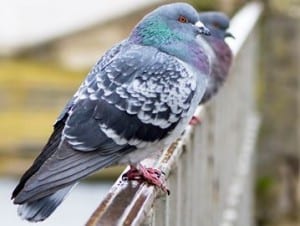
In February 2020, former information and privacy commissioner David Loukidelis released his report into the matter following an independent review. Among other things, he recommended that council shore up their training in ethics and oversight.
Council rescinded the ban last fall and sought to replace it with a modernized version of the district’s original bylaw dating back to 1971. The new bylaw passed Monday night limits the number of backyard squabs to 20 and governs the minimum size and setbacks for their roosts. It also makes enforcement easier for bylaw staff.
Coun. Jordan Back, one of the two council members who opposed the prohibition bylaw, said he was glad to see things largely put back to the way they were.
“This has certainly been a long and very costly process – something that never should have been brought forward in the first place. We were never dealing with a community concern,” he said.
Despite the independent investigation and now abandoned lawsuits, Coun. Mathew Bond said he feels the community is still owed some accountability for the whole “frivolous” process.
“I think that leaving those issues unresolved over the long term is detrimental to the integrity of this council,” he said.
When council held a special meeting on the matter last week, only three members of the community spoke out: two who argued pigeons are a threat to public health and one who said she had no problem’s living next to her own neighbour’s flock.
Mayor Mike Little said his view that pet pigeons are better suited to more rural communities had not changed, but he also found the public health arguments “spurious at best.”
“I think it’s fair to say that this is a pragmatic solution to the problem at hand,” he said.
Similarly, Curren said she has the same perspective on animal rights now as she did when she voted in favour of the prohibition.
“But I am opposed to the process, and I advocated for this bylaw to be brought back to a public process in since Nov. of 2019,” she said, noting that council did “fall short” of the district’s code of ethics. “When we have an opportunity to listen and to learn and to do better, then we need to do that.”
Coun. Jim Hanson, who also originally voted in favour of the ban, said with only two or three known pigeon fanciers in the district, the issue wasn’t worth any more of council’s time.
“If the keeping of pigeons becomes a community issue justifying further involvement, no doubt we will hear about that,” he said.
Muri and Forbes both recused themselves from the discussion and vote.
Source
Pigeon Patrol Products & Services is the leading manufacturer and distributor or bird deterrent (control) products in Canada. Pigeon Patrol products have solved pest bird problems in industrial, commercial, and residential settings since 2000, by using safe and humane bird deterrents with only bird and animal friendly solutions. At Pigeon Patrol, we manufacture and offer a variety of bird deterrents, ranging from Ultra-flex Bird Spikes with UV protection, Bird Netting, 4-S Bird Gel and the best Ultrasonic and audible sound devices on the market today.
Voted Best Canadian wholesaler for Bird Deterrent products ten years in a row.
Contact us at 1 877-4-NO-BIRD,(604) 585-9279 or visit our website at www.pigeonpatrol.ca
Pigeon/Pigeon Patrol / Pigeons Roosing / Vancouver Pigeon Control / Bird Spikes / Bird Control / Bird Deterrent / PIgeon Deterrent / Surrey Pigeon Control / Pest / Seagull deterrent / Vancouver Pigeon Blog / Birds Inside Home / Pigeons in the cities / Ice Pigeons / What to do about pigeons / sparrows, Damage by Sparrows, How to Keep Raccoons Away, Why Are Raccoons Considered Pests / De-fence / Pigeon Nesting / Bird Droppings / Pigeon Dropping / woodpecker control / Professional Bird Control Company / Keep The Birds Away / Birds/rats/seagull/pigeon/woodpecker/dove/sparrow/pidgeon control/pidgeon problem/pidgeon control/flying rats/pigeon problems/ bird netting/bird gel/bird spray/bird nails/bird guard
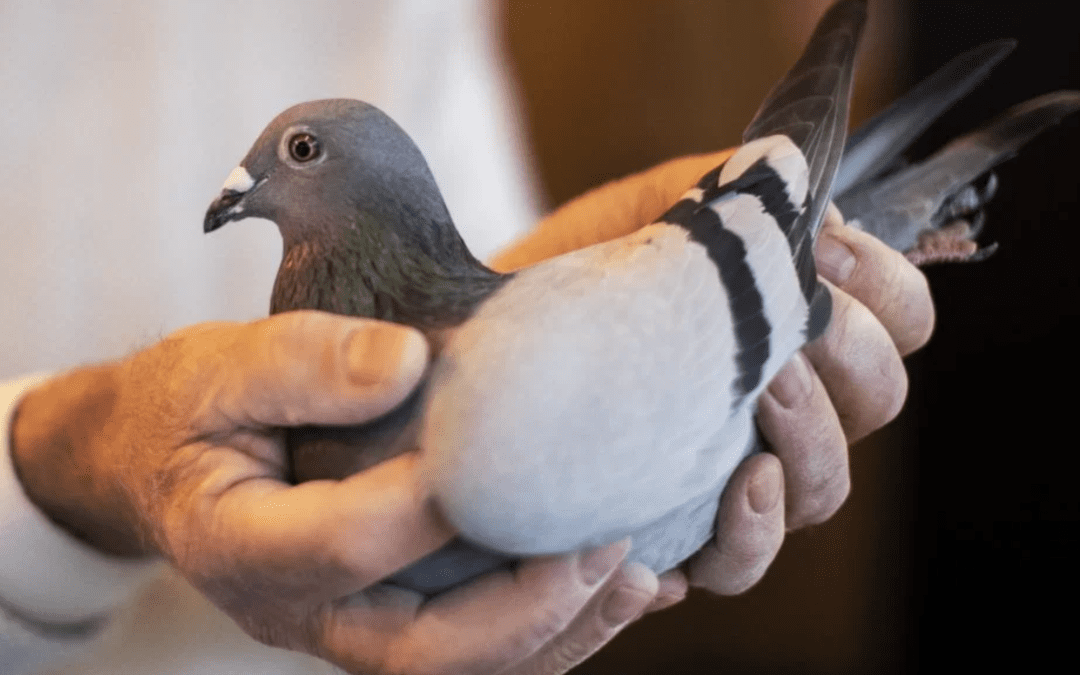
by Pigeon Patrol | Jan 19, 2023 | history of pigeons, MBCA, pet bird, Pigeon Control, Pigeon Droppings, Pigeon Patrol's Services, Pigeon Predators
BARRIE, ONT. — Joe Ferreira has been racing since 1975.
Not cars. Not horses. But pigeons.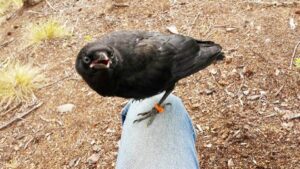
On a race day, Ferreira takes his pigeons to a clubhouse where their electronic tracking bands are scanned and driven to a starting line. Then, they race back home.
Just like human athletes, the pigeons train for a big race. Ferreira let’s his birds go free and sees if they come back.
He says he’s built bonds with all 67 of his birds.
“Sometimes the day of a race, I look at the weather. And if the weather looks a little weird, I say ‘I don’t wanna risk losing you.’ So I keep them home,” Ferreira said.
The sport that has been around for centuries but Ferreira says it faces a lot of misconceptions.
“If you took one of those wild (pigeons), took it two blocks from the house…you would never see it again,” Ferreira says. “Those pigeons give us a bad name.”
Ferreira admits the sport is struggling to maintain interest.
“Nowadays they got all these bylaws. They won’t allow pigeons here or there. So it’s kinda killing the support. Plus, the younger generation is too busy with their video games at home.”
Source
Pigeon Patrol Products & Services is the leading manufacturer and distributor or bird deterrent (control) products in Canada. Pigeon Patrol products have solved pest bird problems in industrial, commercial, and residential settings since 2000, by using safe and humane bird deterrents with only bird and animal friendly solutions. At Pigeon Patrol, we manufacture and offer a variety of bird deterrents, ranging from Ultra-flex Bird Spikes with UV protection, Bird Netting, 4-S Bird Gel and the best Ultrasonic and audible sound devices on the market today.
Voted Best Canadian wholesaler for Bird Deterrent products ten years in a row.
Contact us at 1 877-4-NO-BIRD,(604) 585-9279 or visit our website at www.pigeonpatrol.ca
Pigeon/Pigeon Patrol / Pigeons Roosing / Vancouver Pigeon Control / Bird Spikes / Bird Control / Bird Deterrent / PIgeon Deterrent / Surrey Pigeon Control / Pest / Seagull deterrent / Vancouver Pigeon Blog / Birds Inside Home / Pigeons in the cities / Ice Pigeons / What to do about pigeons / sparrows, Damage by Sparrows, How to Keep Raccoons Away, Why Are Raccoons Considered Pests / De-fence / Pigeon Nesting / Bird Droppings / Pigeon Dropping / woodpecker control / Professional Bird Control Company / Keep The Birds Away / Birds/rats/seagull/pigeon/woodpecker/dove/sparrow/pidgeon control/pidgeon problem/pidgeon control/flying rats/pigeon problems/ bird netting/bird gel/bird spray/bird nails/bird guard
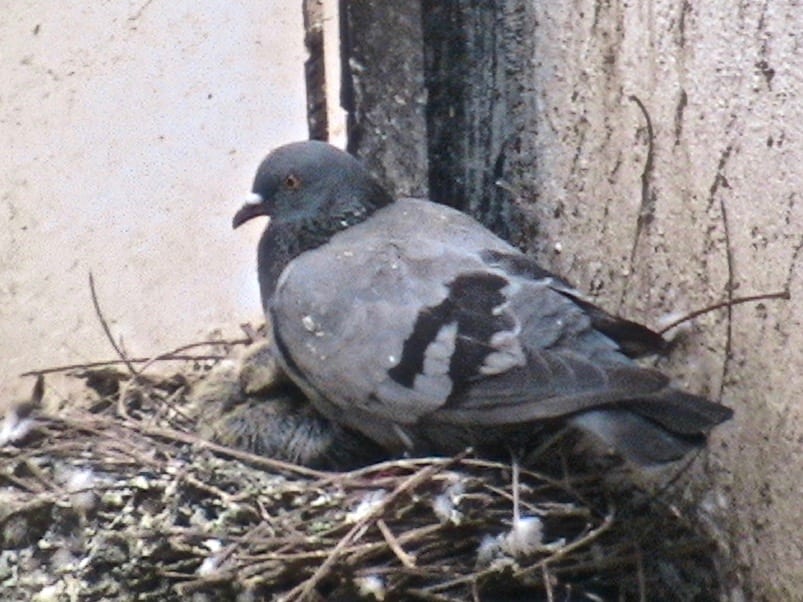
by Pigeon Patrol | Jan 19, 2023 | Bird Spike, Pigeon Droppings, Pigeon Patrol's Services, Pigeon Predators, Pigeon Spikes, Pigeons, Pigeons in the News, Raccoons, Sparrows, UltraSonic Bird Control
To some, they’re a flying nuisance but pigeons are a big business in Senegal.
From his roof in a suburb of the capital Dakar, shopkeeper and pigeon racer Moustapha Gueye releases dozens of birds from the loft, who quickly fly out of sight.
“Here it’s a factory, I’m creating athletes,” he says.
He takes care of his winged friends every morning by training them and developing crossbreeds suitable for flying in hot weather.
“It is a sport created by Europeans, it was imported here. We discovered pigeon racing through the internet. But before we use to be pigeon breeders only,” Gueye says.
Though more popular across the continent, it is a growing sport in the West African country.
Today, there are some 350 pigeon racing enthusiasts in Senegal, who spend a lot of money. A pigeon can cost over 800 US dollars in the country.
“Currently I’m doing business with pigeons. I’ve earned several million CFA francs selling pigeons, I even bought a car through those pigeons,” he says.
“But the most important thing for me is the passion.
“It’s exciting to have pigeons, when you start participating in races, releasing a pigeon 400 km from its loft and it comes back, that’s something you can’t explain, it’s great!”
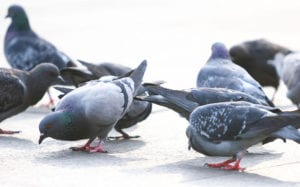
Taking flight
Pigeon racing has clearly taken flight in Senegal and continues to spread its wings.
Senegalese pigeon-racing enthusiasts are keen to turn others on to the sport, and some hope to ultimately turn professional.
But breeder and pigeon racer Oumar Johnson says some people take their dedication too far.
“When you’re too busy with pigeons, things risk going badly,” he says, adding that the pigeon-fanciers’ federation is considering less time-consuming races for youngsters.
Young people are nonetheless the future of the sport, Johnson says, adding that their devotion will make Senegal “one of the greatest pigeon-racing nations” one day.
“In Europe, you have to motivate young people to get involved,” he says.
“Here, young people are rushing into it.”
Source
Pigeon Patrol Products & Services is the leading manufacturer and distributor or bird deterrent (control) products in Canada. Pigeon Patrol products have solved pest bird problems in industrial, commercial, and residential settings since 2000, by using safe and humane bird deterrents with only bird and animal friendly solutions. At Pigeon Patrol, we manufacture and offer a variety of bird deterrents, ranging from Ultra-flex Bird Spikes with UV protection, Bird Netting, 4-S Bird Gel and the best Ultrasonic and audible sound devices on the market today.
Voted Best Canadian wholesaler for Bird Deterrent products ten years in a row.
Contact us at 1 877-4-NO-BIRD,(604) 585-9279 or visit our website at www.pigeonpatrol.ca
Pigeon/Pigeon Patrol / Pigeons Roosing / Vancouver Pigeon Control / Bird Spikes / Bird Control / Bird Deterrent / PIgeon Deterrent / Surrey Pigeon Control / Pest / Seagull deterrent / Vancouver Pigeon Blog / Birds Inside Home / Pigeons in the cities / Ice Pigeons / What to do about pigeons / sparrows, Damage by Sparrows, How to Keep Raccoons Away, Why Are Raccoons Considered Pests / De-fence / Pigeon Nesting / Bird Droppings / Pigeon Dropping / woodpecker control / Professional Bird Control Company / Keep The Birds Away / Birds/rats/seagull/pigeon/woodpecker/dove/sparrow/pidgeon control/pidgeon problem/pidgeon control/flying rats/pigeon problems/ bird netting/bird gel/bird spray/bird nails/bird guard
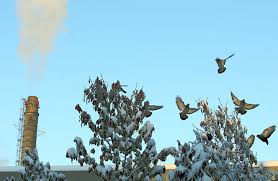
by Pigeon Patrol | Jan 19, 2023 | Bird Spike, Pigeon Droppings, Pigeon Patrol's Services, Pigeon Predators, Pigeon Spikes, Pigeons, Pigeons in the News, Raccoons
Dartmouth has a problem with pigeons and their droppings.
“They’re literally pooping in the lake,” said Emma Wattie, a water resource specialist with the Halifax Regional Municipality.
Feces from pigeons that roost under a bridge along Highway 111, between Lake Banook and Lake Micmac, has been identified as one of the bacteria sources in the water.
“There’s no barrier underneath, the bridge is essentially a throughway from the old canal system, the Shubenacadie Canal,” said Wattie. “Birds are literally roosting and their feces is entering the water.”
“There are hundreds of pigeons roosting underneath there,” said Jim Hunter, an environmental risk and compliance specialist with the municipality.
“It’s not only an environmental issue with the lake, it’s a problem for the paddlers as well going underneath the bridge.”
The municipality plans to force the pigeons out by installing environmentally friendly bird netting.
“It’s a nylon mesh, very fine mesh, that’ll keep any birds of any size in this area out and that way they won’t be able to roost any longer in that location,” said Hunter.
The project is expected to cost about $175,000 and will take four-to-six weeks to complete. The first step is for crews to clean and disinfect the entire underside of the bridge.
“The ultimate goal is that we have the pigeons roosting somewhere else — not under the bridge,” said Sam Austin, the area councillor.
“You think about that bridge, it’s not a natural environment, I mean a pigeon would maybe (roost) on a cliff, in a tree, something like this, normally, but under that bridge is pretty much a direct path from bird to lake.”
Vehicle and pedestrian traffic in the area will be unaffected while crews install the netting.
“For the people who paddle, or boat, on the lake, I would just urge you to be very cautious when you’re going through there, because one side is going to be closed and then they’ll flip to the other side and then the other side will close, so for the duration of construction, one of the lanes under the bridge is closed to boating,” said Austin.
It’s hoped less pigeons and what they leave behind will lead to fewer beach closures in the summer.
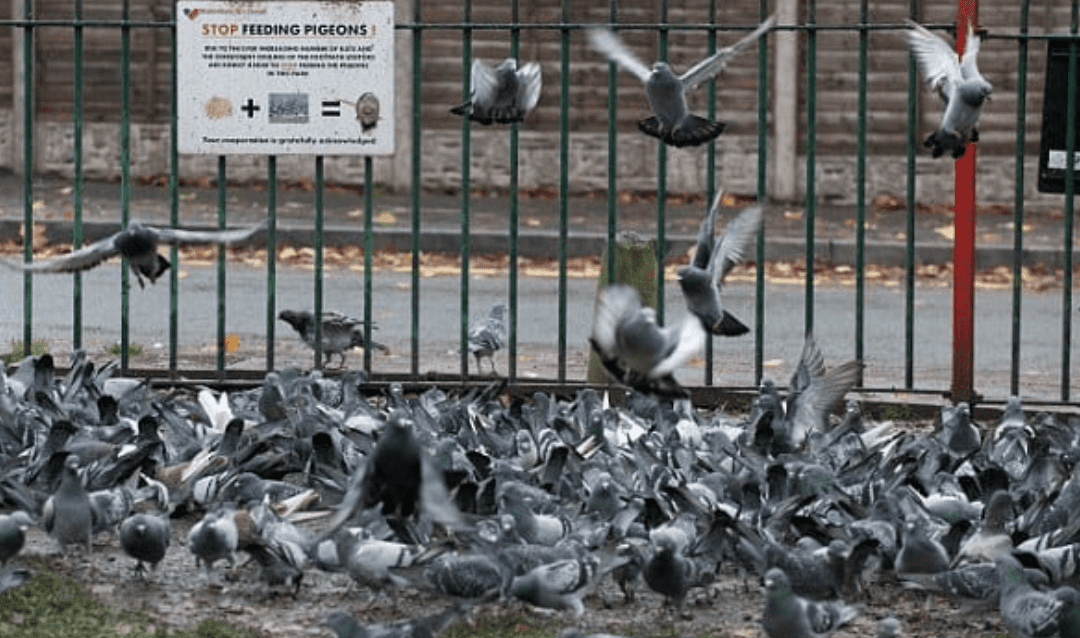
by Pigeon Patrol | Mar 29, 2022 | MBCA, pet bird, Pigeon Control, Pigeon Droppings, Pigeon Patrol's Services, Pigeon Predators
Why Control Birds?
- They can lead to large-scale pig feed losses
- They can spread human and animal disease and carry parasites, and
- They can damage property.
Feed Wastage
- Feed wastage through birds can be high, particularly on outdoor pig units.
- Birds can take large volumes of sow rolls, equating to high financial losses and make it difficult to estimate quantities being eaten by the sows themselves.
- On average, bird feed intake can be 24g per bird per day, rising to 50g per bird in a single feed when herring gulls are the main species; this feed loss can cost thousands of pounds over the course of a year, and
- Feed losses can impact on sow productivity and piglet viability.
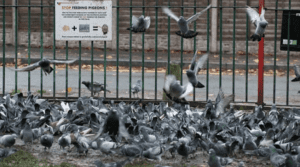
Disease
- Disease organisms spread by birds include: Brachyspira hyodysenteriae (swine dysentery) Salmonella spp., Escherichia coli, Campylobacter spp. and Listeria monocytogenes.
- Pigs are at risk of becoming infected with these organisms through poor standards of hygiene, after being in contact with droppings or if birds contaminate their food or water.
- High levels of birds on units can introduce new strains of Salmonella and re-circulate existing infections; this can result in more pigs carrying Salmonella at slaughter
- People can also be at risk of Salmonella and other infections through similar transmission methods.
Birds Most Likely to be Seen on Pig Units
- Gulls
- Crows
- Pigeons – particularly hard to eliminate
- Starlings – a particular problem during the winter
- Birds of prey – birds of prey will take young piglets and feed off dead piglets and afterbirth.
Bird Prevention
- Manage and prevent access to feed, especially feed wastage around mills, bins and feeders; if food is available, birds will always return.
- Prevent bird population build-up through practical on-farm deterrent measures such as screens; galvanised mesh screens can have a payback on saved feed losses of around 4.5 years (based on an 800-place finisher building).
- An armoury of acoustic and visual scarers will be needed to control birds as they can become habituated to ‘scaring’ mechanisms quickly, often returning to units after a few days.
- Altering the scaring mechanism every few days is the best form of prevention.
- Some birds will be more affected by certain scaring mechanisms than others so it may be necessary to use two per day and mix them up.
Options for Minimising Bird Populations
- Good feed management
- reduce waste and spills
- minimise fines from cobs
- use cobs if starlings are the main problem
- use pellets if gulls are the main problem
- Cost-effective feeding strategies
- Feed by the fenceline
- Reduce the length of the feed face
- Use ad lib feeders with covers and chains around
- Replace material/flexible feeder covers for metal ones
- Trough feeding
- Wet feeding
- Exclude birds from buildings using netting/mesh screens (keep well maintained)
- Apply plastic strips to arc fronts to exclude small birds from gaining access
- Nails on posts.
Options for Scaring Birds
- Acoustic scarers, e.g. gas bangers and distress call audio tapes; note these are effective in the short term but birds will reappear
- Material kites (tied to a weight)
- Decoy birds
- Hawk falconry flights
- Decoy birds
- Walking with an empty gun or stick of similar length behind the tractor at feeding.
By reducing the availability of feed to birds, a number of long-term benefits will be seen, including reduced direct livestock feed losses and therefore improved productivity and viability, less chance of disease transmission and a reduced need for conventional short-term bird control methods.
Targeting and designing cost-effective feeding strategies are therefore key in controlling birds, as well as a greater use of mechanical controls such as lids on feeders and barriers at feed stores. The main requirement for mechanical controls is effective maintenance of the screens used.
Controlling Birds
- Under the Wildlife and Countryside Act 1981, it is possible to control certain species of bird in the UK.
- Persons relying on this licence must be satisfied that non-lethal methods (see examples above) of resolving the problem are ineffective or impracticable.
- Keep records including dates of non-lethal methods applied, to assist licence applications.
- There are special licences for different risks.
- The licence (general) most likely to be required by pig producers is ‘To kill or take certain wild birds to prevent serious damage or disease’. This licence is granted to:
- Prevent serious damage to livestock, foodstuffs for livestock, crops, vegetables, fruit, growing timber, fisheries or inland waters.
- Prevent the spread of disease.
Source
Pigeon Patrol Products & Services is the leading manufacturer and distributor of bird deterrent (control) products in Canada. Pigeon Patrol products have solved pest bird problems in industrial, commercial, and residential settings since 2000, by using safe and humane bird deterrents with only bird and animal friendly solutions. At Pigeon Patrol, we manufacture and offer a variety of bird deterrents, ranging from Ultra-flex Bird Spikes with UV protection, Bird Netting, 4-S Bird Gel and the best Ultrasonic and audible sound devices on the market today.
Voted Best Canadian wholesaler for Bird Deterrent products ten years in a row.
Contact us at 1- 877– 4– NO-BIRD, (604) 585-9279 or visit our website at www.pigeonpatrol.ca
Pigeon/Pigeon Patrol / Pigeons Roosting / Vancouver Pigeon Control /Bird Spikes / Bird Control / Bird Deterrent / Pigeon Deterrent? Surrey Pigeon Control / Pest /Seagull deterrent / Vancouver Pigeon Blog / Birds Inside Home / Pigeons in the cities / Ice Pigeons/ What to do about pigeons/ sparrows , Damage by Sparrows, How To Keep Raccoons Away, Why Are Raccoons Considered Pests/ De-fence / Pigeon Nesting/ Bird Droppings / Pigeon Dropping/ woodpecker control/ Professional Bird Control Company/ Keep The Birds Away/ Birds/rats/ seagull/pigeon/woodpecker/ dove/sparrow/pidgeon control/pidgeon problem/ pidgeon control/flying rats/ pigeon Problems/ bird netting/bird gel/bird spray/bird nails/ bird guard
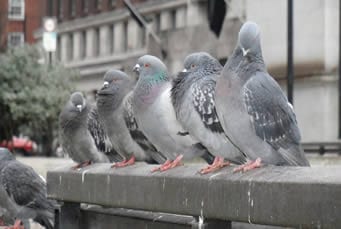
by Pigeon Patrol | Mar 21, 2022 | Bird Spike, Pigeon Patrol's Services, Pigeon Predators, Pigeon Spikes, Pigeons, Pigeons in the News
I never thought much about pigeon excrement until I moved into a condo several years ago and discovered two birds nesting on the balcony. Because my daughter was worried about the cute little eggs, I waited till the squabs were old enough to fly before clearing out the nest and piles of excrement, along with all my pigeon-defaced outdoor furniture. Then a building reno temporarily solved the problem, but as soon as the jackhammers stopped, the pigeons were back and defecating with impunity.
I decided to take action, and quickly discovered some hard facts. Pigeons, instead of nesting in trees, prefer buildings, especially tall buildings with ledges and balconies – i.e., condos. This was bad news in a city undergoing an extended real-estate boom, and this past week analysts were guessing the condo market’s record growth (about 40,000 a year for the past five years) will continue at least until 2010 – which means even more condos, i.e., more perfect pigeon abodes, i.e., more excrement.
Though there’s no pigeon census, many Toronto residents are feeling plagued by pigeons this summer. And it’s possible the rise of condos will increase the pigeon population, says Tom Mason, curator of invertebrates and birds at the Toronto Zoo.
“As the human population has increased, the pigeon population has increased with it.”
Homeowners are complaining of backyard birdfeeders being overrun with pigeons. And certain areas – like the “pigeon gauntlet” north of Broadview subway station – have become legendary. “When they’re not feasting on bread strewn by crazy old people, they’re packed onto the hydro lines above,” says a Riverdale resident. She cited a recent incident involving a man in a crisp suit, “obviously a stranger to the neighbourhood,” who walked straight under the line of fire. “It looked like someone had upended a container of yogurt on him, honestly, it was that copious. He started running around in circles, screaming, then ran off.”
So Toronto’s pigeon problem was bigger than I’d bargained for – but surely I could get them off my own balcony. I started with humane pigeon deterrents: a bobble-headed “scary” owl, fluttering strips of aluminum foil, twirly children’s toys. Nothing worked.
Whenever I heard pigeons cooing on the balcony, I hammered on the window, or leaped out the door shrieking, “Get out of here, you bastards!” In fact, I got so used to the routine that I stopped explaining the outbursts during business calls. As the battle escalated, I laid in wait with water guns, ambushing the enemy as they landed on my railing, or sneaking over to my neighbour’s balcony – where I knew pigeons were nesting behind a deck chair. There, I would jump up, crane around the partition and blast away at the cornered pigeons as they ran around in circles. One day, it occurred to me that I might encounter – and shoot – the neighbour, so I stopped.
It was time to do more research.
Know the enemy
Toronto’s feral pigeons are descended from domestic birds brought over by early settlers. Males and females look the same, are monogamous and take turns incubating eggs, which arrive two at a time. Both parents nurse the babies with a nutrient-laden “crop milk,” which can double the wee ones’ weight in 34 hours.
“What’s also amazing,” said ornithologist Mark Peck of the Royal Ontario Museum, “is that, as far as I know, they are the only bird in Ontario that breeds throughout the entire year,” which means up to nine “clutches” per annum.
Pigeons are also uniquely skilled at navigation – able to fly 70 kilometres per hour, covering up to 1,000 kilometres in a single race. In wartime, pigeons saved lives by carrying military messages across enemy lines. Science hasn’t figured out the exact mechanism, but the motivation, explains the zoo’s Mr. Mason, is that they’re frantically trying to get back to their nestlings.
This is the trouble with research. You seek data to support a pigeon-killing spree, and you end up discovering pigeons are a lot like humans, except pigeons have a lower divorce rate.
So let’s not forget their capital offences. The Nixalite Architectural Bird Control website states that pigeons are “a vector for more than 50 human and livestock diseases.” Their droppings fade finishes on cars and planes, can destroy wood, stone and marble, corrode I-beams, ruin cloth awnings, short out electrical equipment and fill attics with so much excrement “that the actual ceiling collapses.”
On an excrement-removal website, the U.S. General Services Administration warns that pigeon excrement can “lead to potentially fatal diseases of the lungs and central nervous system such as histoplasmosis and cryptococcosis.”
In fact, the Web is packed with anti-pigeon content. The problem: There seems to be no evidence of pigeon-caused plagues in real life. “That’s correct,” said Dr. David McNeely, associate professor of infectious diseases at University of Toronto. Avian-related diseases are rare to begin with, he said, and they’re usually caused by other species. “Don’t pick on poor pigeons,” Dr. McNeely said. “If you want to worry about bird-related diseases, worry about budgie dander.”
Similarly, Mr. Mason, who works at the zoo with pigeons and other birds daily, has never heard of a case. Nor has Mr. Peck at the ROM, who adds how important pigeons have been to science, from Darwin and B.F. Skinner to the present. “Pigeons are not bad birds,” Mr. Peck said. “They’re just successful.”
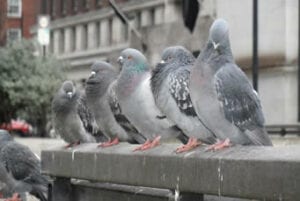
Taking action
These scientist types weren’t helping my case against pigeons at all. I phoned the city to ask if it was legal to kill them. “There are no bylaws that apply to wild pigeons,” said Rishma Govani in the public health department, though “there are rules” about owned pigeons.
Next, I spoke with Donald Fraser, principal of Beacon Environmental impact-assessment (and a former researcher on goose defecation habits, which I figured was close enough to my area of interest), who explained: “It is legal to shoot or kill pigeons because they are a non-migratory bird, and thus not covered by the migratory bird act between Canada and the United States.” You need a permit to shoot gulls, or a hunting licence to shoot geese or ducks, for example, but pigeons are fair game. Mr. Fraser did caution, however, that there might be consequences if firearms were discharged within the city.
Indeed, Constable Wendy Drummond of Toronto Police Services confirmed that, while feral pigeons were not protected by the Criminal Code (the sections on animal cruelty pertain mainly to owned animals such as cattle, she said), any discharge of a pellet gun with intent to kill would result in a weapons charge. Snapping their little necks, quickly and humanely, would be tolerated, she said, “unless, you know, we find 100 dead pigeons.”
So pigeons are good family birds, heroic during wartime and, as Mr. Fraser also pointed out, good scavengers who help keep city streets clean (when not filling them with excrement, that is, but never mind). So maybe we shouldn’t kill them. But feed and encourage them? No way.
On this point, I agreed with London Mayor Ken Livingstone, who reduced pigeon numbers in Trafalgar Square by imposing a controversial feeding ban in 2003. A friend recommended I speak to a woman who fed pigeons in her local park. Oh goody, I thought – my anti-pigeon case would definitely be enhanced by a real-live wacko, probably wearing old rags and a squashed hat covered in excrement, ranting about pigeon rights.
Well, the crazy pigeon lady turned out to be novelist Barbara Gowdy, who may or may not be as deranged as the next writer, but who is undeniably smart, attractive, well-groomed and socially responsible.
“I only feed them at the end of the park, away from homes, during inclement weather, when there is snow and ice on the ground and it’s impossible for them to get food,” Ms. Gowdy said.
For a while, when people attacked her for feeding pigeons, she handed out pamphlets from the Centers for Disease Control and Prevention, which stated, she said, that “even if you ate pigeon excrement, the only thing you’d get is a mild stomach ache.”
Ms. Gowdy is nothing if not persuasive. Or maybe I was ready to crack. After starting out on a crusade to kill all pigeons, I now considered eating pigeon excrement in order to properly research this article.
In any case, the fight had gone out of me – mainly, I think, because of one detail I couldn’t get out of my head: The reason pigeons love condos is because the high-rise towers resemble ancient cliff faces, near Asian seas, where rock doves originally made their homes. That image of our city’s condos as soaring cliffs along the edge of Lake Ontario transformed my view of both the buildings and pigeons.
Ms. Gowdy was right: Toronto’s feral rock pigeons have as much right to live here as we do, and the city would be a much poorer place without its wild animals. I’m willing to live and let live – though it would still be nice to find a way to stop them from living on my particular balcony.
Source
Pigeon Patrol Products & Services is the leading manufacturer and distributor of bird deterrent (control) products in Canada. Pigeon Patrol products have solved pest bird problems in industrial, commercial, and residential settings since 2000, by using safe and humane bird deterrents with only bird and animal friendly solutions. At Pigeon Patrol, we manufacture and offer a variety of bird deterrents, ranging from Ultra-flex Bird Spikes with UV protection, Bird Netting, 4-S Bird Gel and the best Ultrasonic and audible sound devices on the market today.
Voted Best Canadian wholesaler for Bird Deterrent products ten years in a row.
Contact us at 1- 877– 4– NO-BIRD, (604) 585-9279 or visit our website at www.pigeonpatrol.ca
Pigeon/Pigeon Patrol / Pigeons Roosting / Vancouver Pigeon Control /Bird Spikes / Bird Control / Bird Deterrent / Pigeon Deterrent? Surrey Pigeon Control / Pest /Seagull deterrent / Vancouver Pigeon Blog / Birds Inside Home / Pigeons in the cities / Ice Pigeons/ What to do about pigeons/ sparrows , Damage by Sparrows, How To Keep Raccoons Away, Why Are Raccoons Considered Pests/ De-fence / Pigeon Nesting/ Bird Droppings / Pigeon Dropping/ woodpecker control/ Professional Bird Control Company/ Keep The Birds Away/ Birds/rats/ seagull/pigeon/woodpecker/ dove/sparrow/pidgeon control/pidgeon problem/ pidgeon control/flying rats/ pigeon Problems/ bird netting/bird gel/bird spray/bird nails/ bird guard












